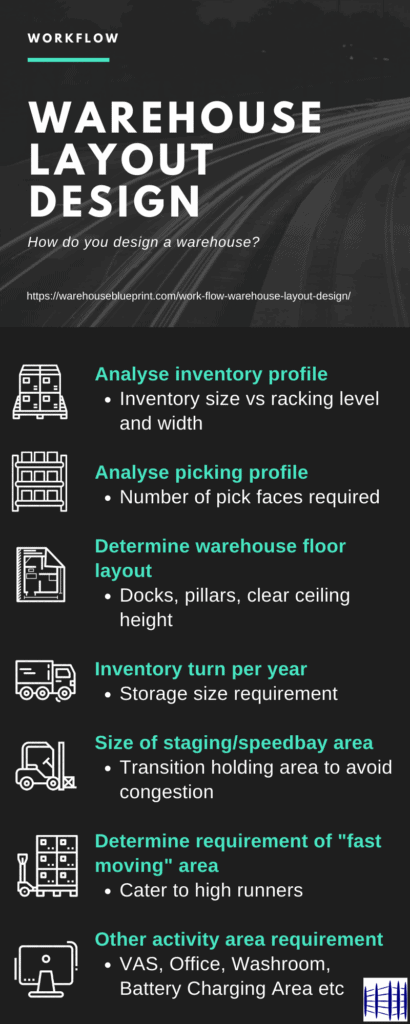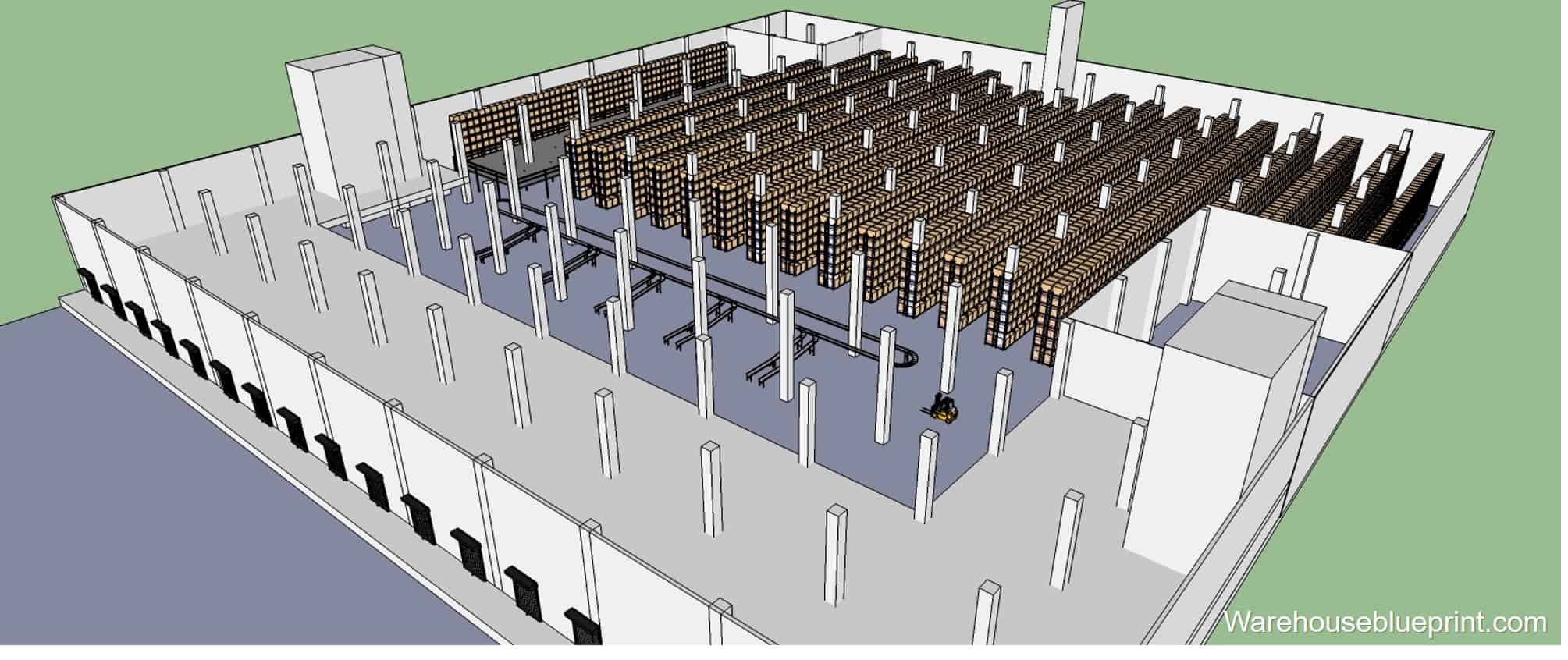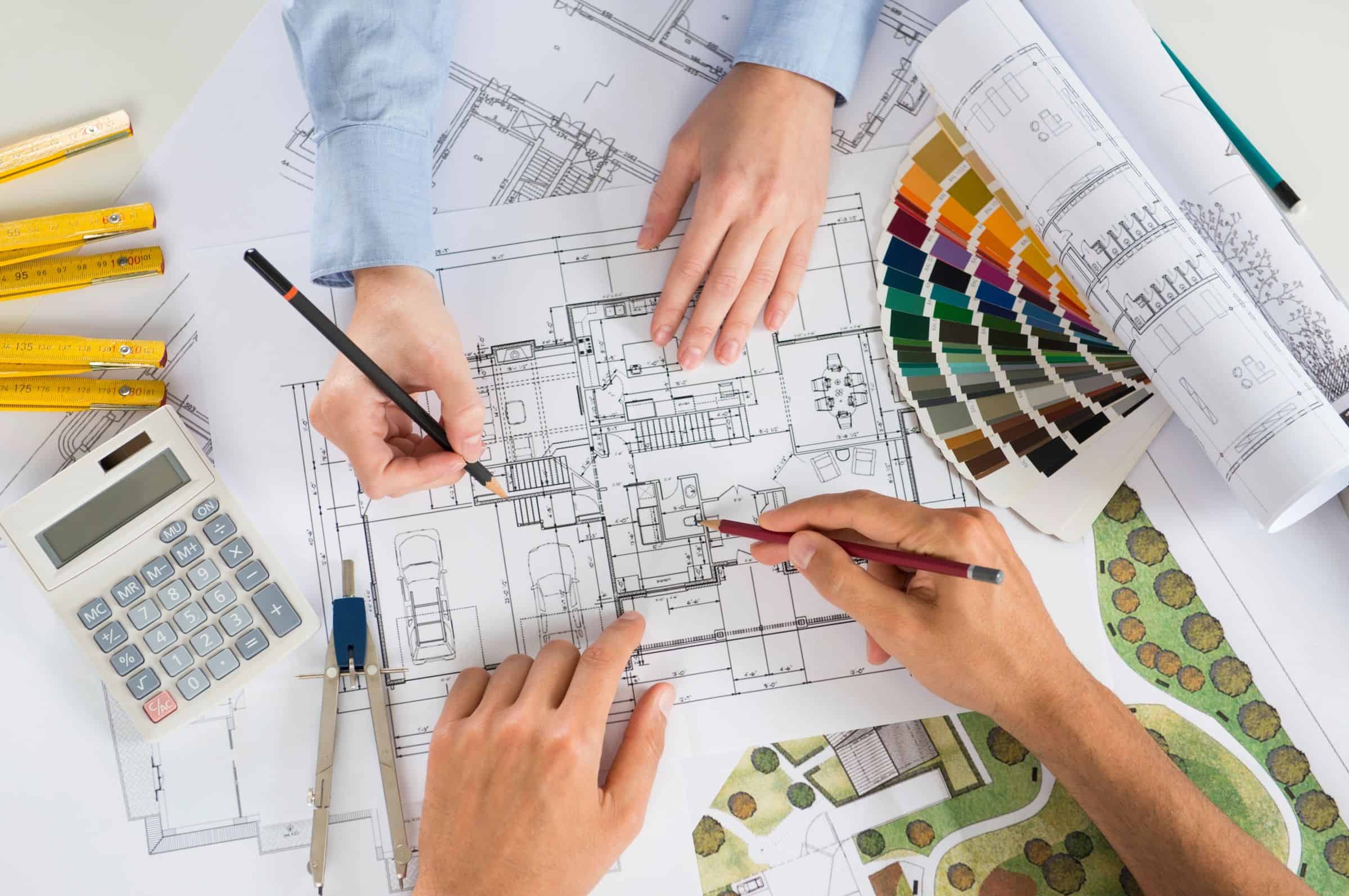“Michael, we have a potential business. Looking for warehouse layout design. Forecast provided by this customer is extraordinary, especially when it comes to November 11. (Do check out what happens to China on this date every year, I’m sure you will be surprised if you have not heard of this before)."
"We need to design a new warehouse to cater to the growth in the coming years.” The Business Development Director was sharing with me when I was in the 3PL (third party logistics) company.
The BD Director continued, “What we have right now are forecasted numbers from the client. They have given us the SKU profile, pack key masterlist, forecast, and seasonality information.”
“We have also sourced for a potential warehouse from a real estate company. This warehouse should be able to fulfil the need of the client.”

This is how a warehouse design project normally starts.
There are essentially 4 main stages you, as a warehouse designer, have to go through.
Stage 1: Data Analysis
1. Analyse inventory profile
(This is to determine average height and width of the entire pallet. You can decide on the racking level height and width of the bay. Also, the type of racking to be used can be firmed up here.)
2. Analyse picking profile
(From here, you can determine the number of pick faces required.)
3. Determine warehouse floor layout
a. Docks
b. Pillars
c. Clear ceiling height
(This gives you the guideline on how the warehouse constraint is like so that all the components need to be fitted within the warehouse.)
4. Inventory turn per year
a. Determine monthly inbound volume
b. Average to daily/weekly volume
(You will be able to know how many pallet positions are required on average, based on the inventory in the warehouse.)
5. Check how big staging area should be
(From the daily/weekly inbound volume, and the throughput from inbound staging to putaway, the size of the staging area can be determined.)
6. Determine if “fast moving” area is required
a. If yes, what storage method
(Space needs to be carved out if you find that it is justified to have a dedicated “fast moving” area.)
7. Check for other areas requirement
a. VAS
b. Packing/consolidation
c. Dispatch
d. Office
e. Washroom
f. Meeting rooms
g. Battery charging room
h. Prayer room
i. Canteen
(Aside from the main storage area, these are the areas that need to be considered as well. The spaces need to be factored in.)
Stage 2: AutoCAD
1. Based on calculations, determine number of bays required
2. Draw rows of bays, and consider the locations of pillars
3. Take into account aisle width (and the potential type of MHE used)
4. Check orientation of racking and whether cross aisle/underpass is necessary
5. Determine location of inbound staging area
6. Determine location of “fast moving” area
7. Determine VAS location
8. Determine outbound staging area
9. Determine dispatch area
10. Determine Office, washroom, meeting room, battery charging room, prayer room and canteen

Stage 3: SketchUp
1. Model empty warehouse
2. Setup configuration of storage medium
3. Duplicate storage medium
4. Put in room/walls
5. Place other components into warehouse
6. Includes signage and text
7. Export as images
8. Export as video (if necessary)
9. Render model (if necessary)

Stage 4: Powerpoint
1. Insert AutoCad pictures with cross section diagrams of racking
a. Indicate material and human flows
2. Insert SketchUp images from different angle
a. Video too
Situations
1. If detailed 3d drawings are required, we will model with the pallet racking.
2. If conceptual idea is required, we can replace individual racking with blocks to demarcate the different area.


Thanks for pointing out the factors which need to be considered to improve the workflow of a warehouse. The warehouse is an important part of the supply chain and suitable initiatives need to be taken to improve the workflow of the warehouse. Apart from this, the safety audit should be conducted to identify and repair damaged and abnormal components in time to prevent accidents and subsequent product loss. Replacement of damaged pallets with suitable substitutes is really essential to prevent any kinds of accidents.